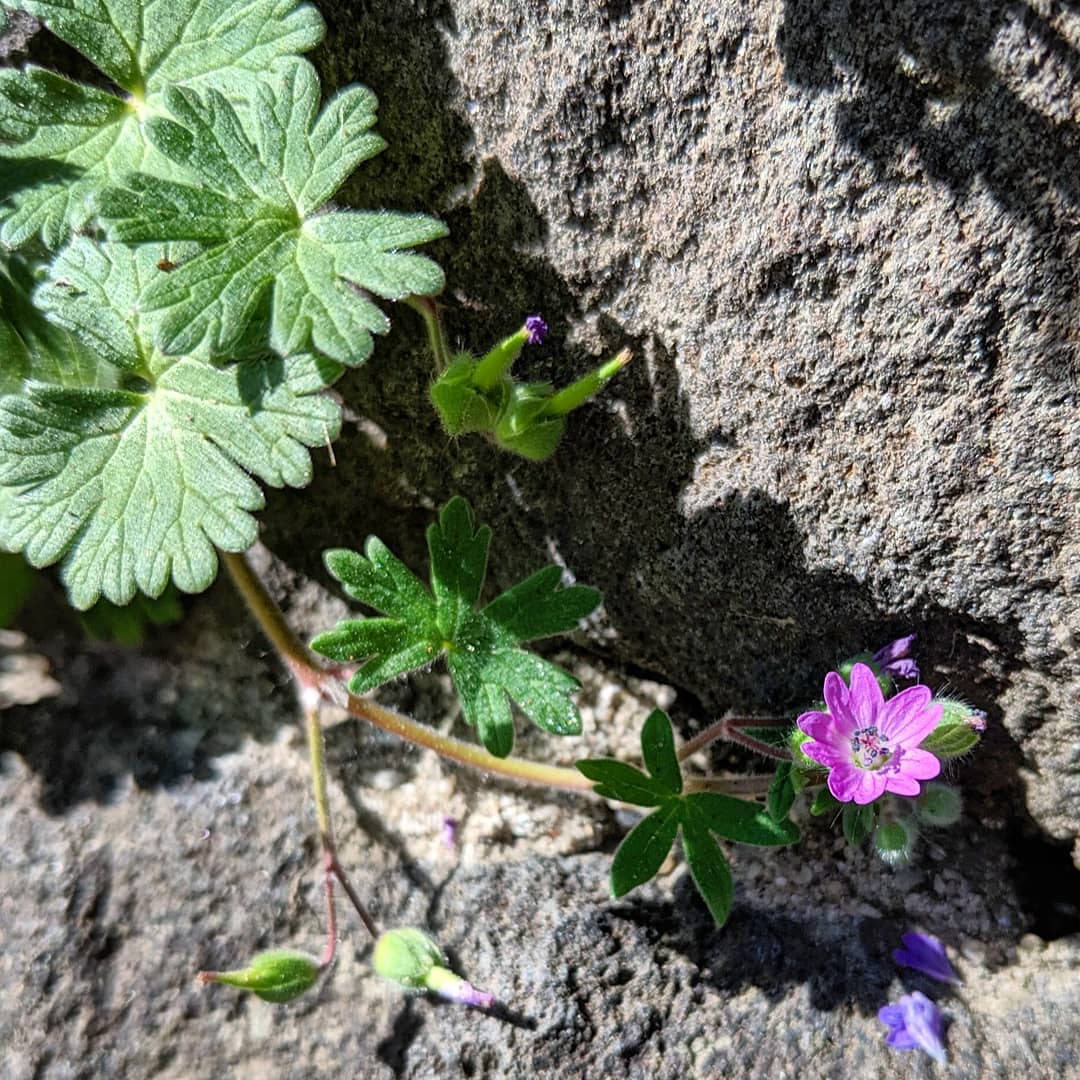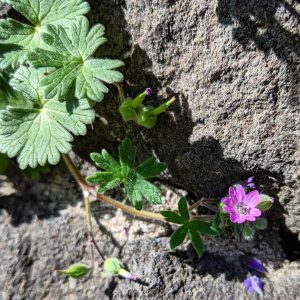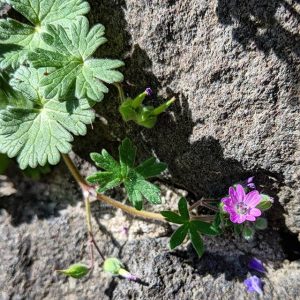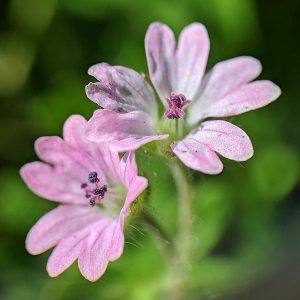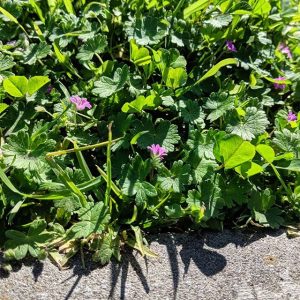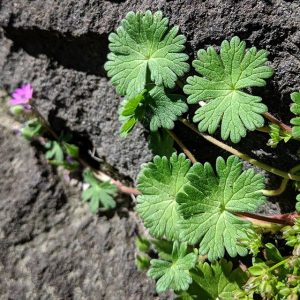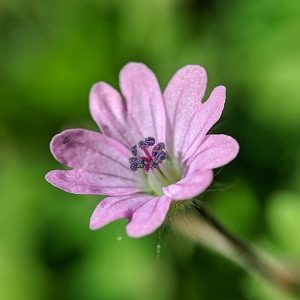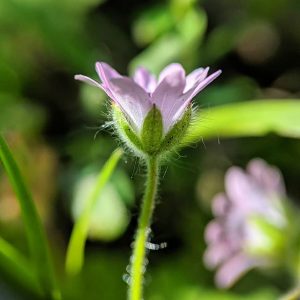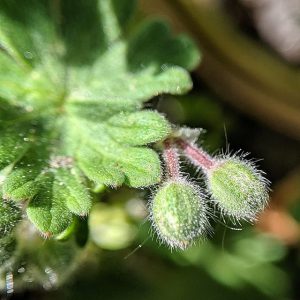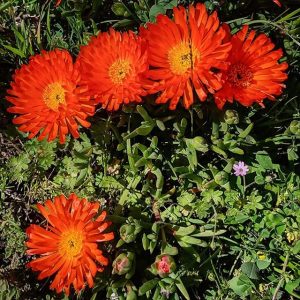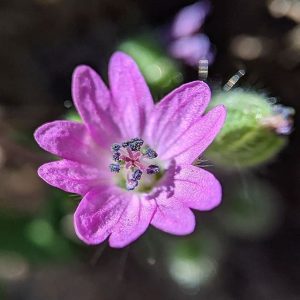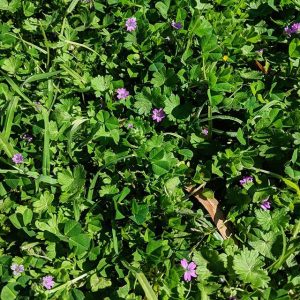Dove’s-foot Crane’s-bill (Geranium molle), a Eurasian annual introduced to 19th century Australia as a contaminant of grain and fodder seed.
This geranium has been noted in particular to have been spread as a contaminant of seed shipments of fodder clovers, which themselves are now pervasive weeds here. The first Australian collections of the plant were made in Tasmania in 1856 and northern NSW in 1875. The species showed up in Victoria at Queenscliff in 1885, Port Fairy in 1886, and in far east Gippsland in the late 1940s; survey records and collections of the species within Melbourne date only to the 1970s and 1980s.
Like many Eurasian imports, Dove’s-foot Crane’s-bill is well-adapted to the disturbance cycles of cultivation and managed infrastructure like roads and railway corridors, and to the dry and sandy soils that tend to prevail in those latter spaces. Like many weeds, the species is highly self-fertile, with the flower structure promoting selfing of pollen onto the stigma during opening; consequently, and despite its delicate stature, an individual plant can produce hundreds of seeds in a season.
The photographed plants were found growing in road median planting beds and verge lawns in Melbourne’s outer south-west, and from a low joint on the bluestone wall of the Rucker’s Hill embankment. It is notable that we are entering the spring’s seasonal profusion of Melbourne’s weed geraniums (and other turf weeds), and already have several more species in the family lined up to post—I hope everyone follows this channel principally to see tiny cryptic pink flowers under the loupe.
View Original Post on Instagram
Search for information about Geranium molle in the Flora of Victoria
View information and occurrences of Geranium molle on the Atlas of Living Australia
